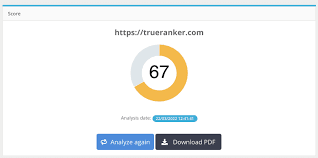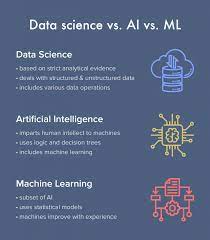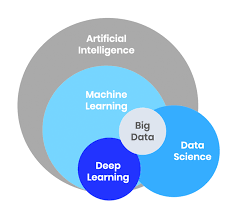The Power of SAP Predictive Analytics
In today’s data-driven world, businesses are constantly seeking ways to gain valuable insights and make informed decisions. This is where SAP Predictive Analytics comes into play, offering a powerful tool that enables organisations to forecast trends, identify patterns, and make accurate predictions based on their data.
With SAP Predictive Analytics, businesses can leverage advanced algorithms and machine learning techniques to analyse historical data, uncover hidden patterns, and predict future outcomes with a high degree of accuracy. By harnessing the power of predictive analytics, organisations can anticipate market trends, optimise processes, and make strategic decisions that drive business growth.
One of the key benefits of SAP Predictive Analytics is its user-friendly interface that allows users to build predictive models without the need for extensive programming knowledge. This accessibility empowers business users across different departments to harness the power of predictive analytics and extract valuable insights from their data.
Furthermore, SAP Predictive Analytics seamlessly integrates with existing SAP systems, enabling businesses to leverage their existing data infrastructure and maximise the value of their investments. By combining predictive analytics with real-time data from various sources, organisations can gain a comprehensive view of their operations and make proactive decisions that drive success.
Whether it’s predicting customer behaviour, optimising supply chain operations, or identifying potential risks, SAP Predictive Analytics offers a versatile solution that caters to diverse business needs. By unlocking the potential of predictive analytics, organisations can stay ahead of the competition, mitigate risks, and seize new opportunities in an increasingly competitive market landscape.
In conclusion, SAP Predictive Analytics is a powerful tool that empowers businesses to unlock the full potential of their data. By leveraging advanced analytics capabilities and machine learning algorithms, organisations can gain valuable insights, make informed decisions, and drive business growth in today’s dynamic business environment.
8 Advantages of SAP Predictive Analytics: Enhancing Forecasting, Decision-Making, and Efficiency
- Enables accurate forecasting of trends and patterns.
- Empowers businesses to make data-driven decisions.
- Helps in predicting future outcomes with high accuracy.
- Offers user-friendly interface for building predictive models.
- Seamlessly integrates with existing SAP systems.
- Allows diverse business departments to leverage predictive analytics.
- Enhances operational efficiency and process optimisation.
- Enables proactive decision-making based on real-time data.
Challenges of SAP Predictive Analytics: Navigating Learning Curves, Costs, Integration, and Maintenance
- 1. Steep Learning Curve
- 2. Costly Implementation
- 3. Integration Challenges
- 4. Maintenance Complexity
Enables accurate forecasting of trends and patterns.
SAP Predictive Analytics offers a significant advantage by enabling organisations to achieve precise forecasting of trends and patterns. By utilising advanced algorithms and machine learning techniques, businesses can leverage their historical data to identify subtle patterns and predict future trends with a high level of accuracy. This capability empowers decision-makers to make informed strategic decisions based on reliable forecasts, ultimately enhancing operational efficiency and driving sustainable business growth.
Empowers businesses to make data-driven decisions.
SAP Predictive Analytics empowers businesses to make data-driven decisions by providing advanced algorithms and machine learning capabilities that enable organisations to analyse data, identify patterns, and predict future outcomes with precision. By leveraging the power of predictive analytics, businesses can extract valuable insights from their data, enabling them to make informed decisions based on evidence rather than intuition. This pro of SAP Predictive Analytics ensures that businesses can optimise their operations, anticipate market trends, and stay ahead of the competition through strategic and well-informed decision-making processes.
Helps in predicting future outcomes with high accuracy.
SAP Predictive Analytics stands out for its exceptional ability to forecast future outcomes with remarkable precision. By utilising advanced algorithms and machine learning techniques, this software empowers businesses to make accurate predictions based on historical data analysis. This capability enables organisations to anticipate trends, identify patterns, and foresee potential outcomes with a high level of accuracy, thereby providing valuable insights that guide strategic decision-making and drive business success.
Offers user-friendly interface for building predictive models.
SAP Predictive Analytics stands out for its user-friendly interface, making it accessible for users across various departments to effortlessly build predictive models without requiring extensive programming skills. This intuitive design empowers businesses to leverage the power of predictive analytics, enabling them to extract valuable insights from their data and make informed decisions with ease. By providing a straightforward platform for creating predictive models, SAP Predictive Analytics enhances efficiency and productivity, ultimately driving better outcomes and strategic decision-making within organisations.
Seamlessly integrates with existing SAP systems.
One significant advantage of SAP Predictive Analytics is its seamless integration with existing SAP systems. This capability allows businesses to leverage their current data infrastructure efficiently, maximising the value of their investments in SAP technology. By integrating predictive analytics with existing systems, organisations can streamline processes, access real-time data from multiple sources, and gain a holistic view of their operations. This seamless integration empowers businesses to make data-driven decisions effectively, enhancing operational efficiency and driving business growth.
Allows diverse business departments to leverage predictive analytics.
SAP Predictive Analytics offers a significant advantage by enabling diverse business departments to harness the power of predictive analytics. This capability empowers teams across various functions, from marketing and sales to operations and finance, to leverage advanced algorithms and machine learning techniques for forecasting trends, identifying patterns, and making data-driven predictions. By democratising access to predictive analytics tools, SAP facilitates collaboration and knowledge sharing among departments, leading to more informed decision-making processes and ultimately driving overall business success.
Enhances operational efficiency and process optimisation.
SAP Predictive Analytics offers a significant advantage by enhancing operational efficiency and process optimisation within organisations. By leveraging advanced algorithms and machine learning techniques, SAP Predictive Analytics enables businesses to analyse historical data, identify patterns, and predict future outcomes accurately. This capability allows companies to streamline their operations, automate repetitive tasks, and make data-driven decisions that optimise processes across various departments. Ultimately, the use of SAP Predictive Analytics leads to improved efficiency, reduced costs, and enhanced productivity within the organisation.
Enables proactive decision-making based on real-time data.
SAP Predictive Analytics offers the invaluable advantage of enabling proactive decision-making based on real-time data. By utilising advanced algorithms and machine learning techniques, businesses can analyse data as it streams in, allowing for immediate insights and predictions. This real-time capability empowers organisations to make informed decisions swiftly, respond promptly to changing market conditions, and stay ahead of the curve in a fast-paced business environment. The ability to act on up-to-the-minute data ensures that businesses can proactively address challenges, seize opportunities, and optimise their operations for maximum efficiency and success.
1. Steep Learning Curve
For users who are not well-versed in advanced analytics concepts and techniques, SAP Predictive Analytics presents a significant challenge due to its steep learning curve. Navigating the complexities of the platform may require additional time and resources to acquire the necessary skills and knowledge, potentially hindering the seamless adoption and utilisation of predictive analytics within an organisation.
2. Costly Implementation
Implementing SAP Predictive Analytics can pose a significant challenge in terms of cost, particularly for small to medium-sized businesses operating within constrained budgets. The initial investment required for setting up and integrating the software, along with the expenses associated with training staff on how to effectively utilise the platform, can be prohibitive for organisations with limited financial resources. This barrier to entry may deter some businesses from harnessing the benefits of predictive analytics, potentially limiting their ability to leverage data-driven insights to drive strategic decision-making and competitive advantage.
3. Integration Challenges
One significant drawback of SAP Predictive Analytics is the integration challenges it presents. Connecting SAP Predictive Analytics with current systems and data sources can be a complex process that demands additional time and resources. This integration hurdle may lead to delays in implementation and require specialised expertise to ensure seamless connectivity between different platforms. As a result, businesses considering the adoption of SAP Predictive Analytics must be prepared to address these integration challenges to fully leverage the benefits of predictive analytics within their operations.
4. Maintenance Complexity
One significant drawback of SAP Predictive Analytics is the maintenance complexity associated with updating and managing predictive models. This process often necessitates continuous support from skilled data scientists or analysts to ensure that the models remain accurate and up-to-date. The reliance on specialised expertise for ongoing maintenance can lead to increased operational costs and potential delays in implementing changes or improvements to the predictive models, hindering the agility and responsiveness of businesses relying on SAP Predictive Analytics for data-driven decision-making.






